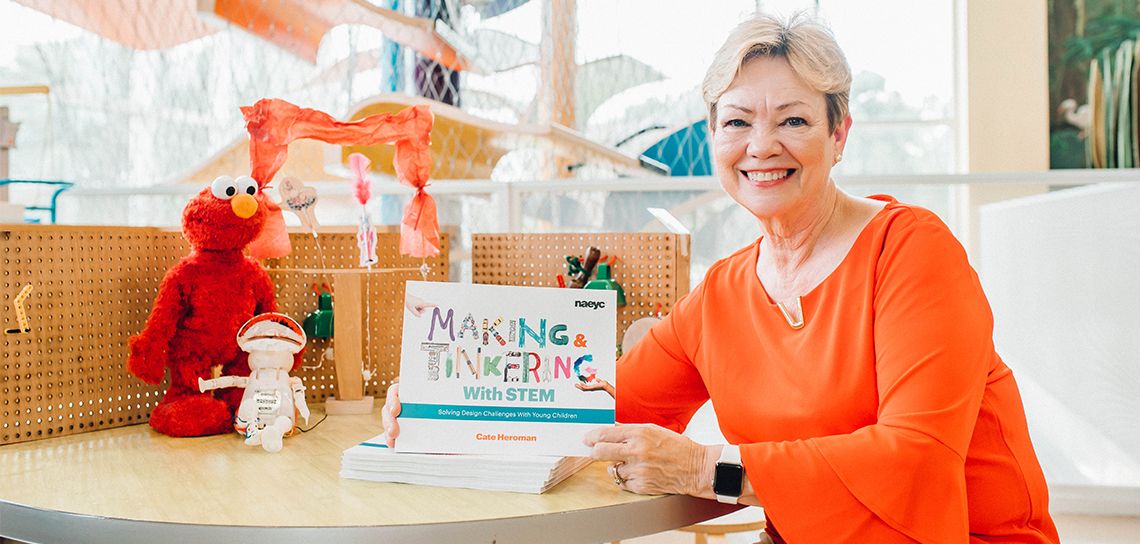Tinker away: Cate Heroman’s new book inspires imagination
Cate Heroman remembers as a child coming home one day from school to find her beloved new Etch-a-Sketch broken into pieces. “My father wanted to know how it worked, and took it all apart,” she says. At first angry with him, she soon succumbed to the same curiosity. “I looked inside and saw the knobs and how they controlled the bars moving up and down,” she says. “It got me really curious about how things worked.”
In hopes of promoting that same curiosity in young people today, Heroman has spent years developing “tinkering” activities for children—activities that were recently published by the National Association for the Education of Young Children (NAEYC) in her book Making & Tinkering with STEM. The book became a NAEYC bestseller, and this past June, Association Media & Publishing awarded it the Gold Award in the General Audience category at the 2018 EXCEL Awards Gala.
Heroman wasn’t able to attend the gala in Washington, D.C., because she was actually putting on a making and tinkering workshop on behalf of Knock Knock Children’s Museum at a local library. “It really was such an honor, though,” she says.
In her work as a nationally recognized early childhood consultant and as executive committee chair at Knock Knock, Heroman has long promoted the integration of what is known as “maker education,” a project-based learning method associated with STEM learning. “I feel that the approach has so much potential for developing creative thinking, problem solving and so forth,” she says. “Kids can really take these skills and build on them.”
Designed for parents and educators to implement with children ages 3 to 8, the book challenges kids to design a house that the big bad wolf can’t blow down, to build a troll-proof bridge, and to build a chair for baby bear. “Literacy is such a huge focus in early education,” says Heroman. “I thought, well, that’s the way I can integrate this. The book uses children’s literature as a jumping-off point, and then we think about problems to solve.”
Heroman says she is hopeful that the book might give teachers an approachable way to integrate STEM activities into the classroom. “You know they say that about two-thirds of elementary kids today are going to be doing jobs that haven’t even been invented yet,” she says. “So what do we do to prepare them?” She says that by enabling them to tinker, to make and to engineer at a young age, parents and educators are empowering them with skills to tackle problems in the future.












